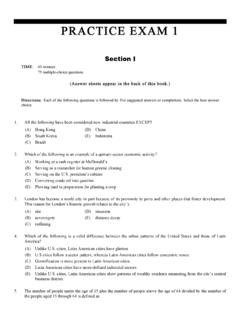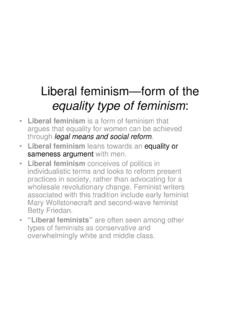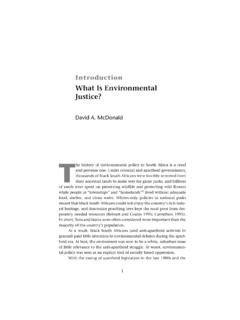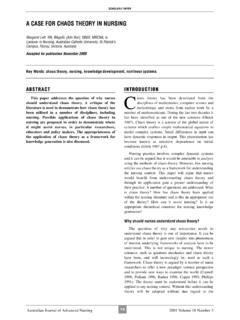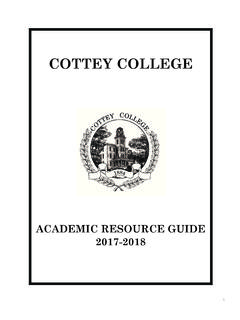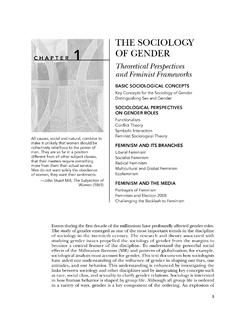Transcription of PRACTICE EXAM 1 - REA
1 PRACTICE EXAM 1 AP Human Geography Section I TIME: 60 minutes 75 multiple-choice questions (Answer sheets appear in the back of this book.) Directions: Each of the following questions is followed by five suggested answers or completions. Select the best answer choice. 1. All the following have been considered new industrial countries EXCEPT (A) Hong Kong (D) China (B) South Korea (E) Indonesia (C) Brazil 2. Which of the following is an example of a quinary-sector economic activity? (A) Working at a cash register at McDonald s (B) Serving as a researcher for human genetic cloning (C) Serving on the president s cabinet (D) Converting crude oil into gasoline (E) Plowing land in preparation for planting a crop 3. London has become a world city in part because of its proximity to ports and other places that foster development.
2 This reason for London s historic growth relates to the city s (A) site (D) situation (B) sovereignty (E) distance decay (C) redlining 4. Which of the following is a valid difference between the urban patterns of the United States and those of Latin America? (A) Unlike cities, Latin American cities have ghettos. (B) cities follow a sector pattern, whereas Latin American cities follow concentric zones. (C) Gentrification is more present in Latin American cities. (D) Latin American cities have more-defined industrial sectors. (E) Unlike cities, Latin American cities show patterns of wealthy residents emanating from the city s central business district. 5. The number of people under the age of 15 plus the number of people above the age of 64 divided by the number of the people aged 15 through 64 is defined as (A) carrying capacity (D) age-sex pyramid (B) primary economic sector (E) infrastructure (C) dependency ratio 6.
3 Governments such as those once controlled by the Taliban in Afghanistan and the Ayatollah Khomeini in Iran are classified as (A) landlocked (D) theocratic (B) parliamentary (E) microstates (C) federal 7. All the following were original members of the European Community, the predecessor to the European Union, EXCEPT (A) France (D) Italy (B) Belgium (E) The Netherlands (C) United Kingdom 8. In 1492, Christopher Columbus s voyage took nearly 40 days to cross the Atlantic Ocean, a trip that would take a modern ship less than one week. This difference best reflects the geographic concept of (A) distance decay (D) space-time compression (B) uneven development (E) distribution (C) stimulus diffusion 9. The arrow on the map above points to a city in India containing the largest number of shrines from which of the following religions?
4 (A) Sikhism (D) Christianity (B) Shintoism (E) Hinduism (C) Buddhism 10. The region outlined above contains delivery destinations served by United Trucking. Which of the following classifications best fits this region? (A) Functional (D) Mental (B) Formal (E) Perceptual (C) Vernacular 11. Compared with the world pattern of crude birth rates, the world pattern of crude death rates shows (A) more variation because of the vast inequalities in minimal health care throughout the world (B) less variation because of the general availability of minimal health care facilities throughout the world (C) equal variation because of the offsetting effect of birth and death rates throughout the world (D) no variation (E) high variation because of the high infant mortality in some world regions 12.
5 Which of the following would be most attracted to export-processing zones in less-developed countries? (A) Transnational corporations assembling products that are bulk reducing or not weight gaining (B) Multinational firms wanting to build world headquarters (C) Quaternary-sector workers wanting to find jobs (D) Technopoles (E) International lending agencies 13. The second agricultural revolution developed at the same time as (A) growing urban markets were demanding increased food production (B) improved genetic modification of food allowed for increased harvests in developing countries (C) humans were forming communes and practicing open-field farming (D) vast shortages in laborers existed because of communicable diseases (E) large streams of migrants moved from core to peripheral countries Adoption of the iPod in New York City CBATime ElapsedPercentage of Population ThatHas Adopted iPod1000 14.
6 Which of the following most likely explains the diffusion pattern of the iPod depicted in the graph above? (A) In the innovation stage, at point A, only a small number of iPod purchases were made, but by point B the number of adopters had grown exponentially as the early buyers spread the word of the iPod. (B) The highest exponential growth rate was achieved by point C, where the fastest adoption of the iPod occurred. (C) The highest adoption rate occurred at point A because, as a new invention, the iPod aroused excitement. (D) Point C represents the late-adopter stage, when adoption of the iPod reached all people in the population. (E) The pattern represents relocation diffusion. 15. All the following are true of truck farming EXCEPT: (A) Among the most common truck crops are tomatoes, strawberries, and lettuce.
7 (B) Most often it is characterized by the use of mechanized farming tools. (C) Labor costs are often relatively high on these large-scale farming operations. (D) It is the predominant agricultural PRACTICE found in the southeastern United States. (E) Truck farmers harvests are usually intended for distant markets. 16. Which of the following places is least influenced by conflicts related to multilingualism? (A) Nigeria (D) Cyprus (B) Venezuela (E) Belgium (C) Quebec 17. Which of the following was the first prerequisite for the start of urbanization? (A) Formal political organization (B) Agricultural surplus (C) Monarchial control (D) Privatization of land ownership (E) Development of currency 18. Which of the following regions is most threatened by desertification?
8 (A) South America (D) Africa (B) Australia (E) Asia (C) Europe 19. Which of the following significantly weakened the strength of Mackinder s geopolitical heartland theory? (A) Ascendance of the United States international influence after World War II (B) Existence of a pivot area (C) Growth of Soviet power in eastern Europe (D) Influence of Eurasia in world affairs (E) Rise of Nazi Germany 20. Which of the following factors had the greatest effect in proving the demographic theorist Thomas Malthus incorrect? (A) Decreased land supply after the Industrial Revolution (B) Improved fertilizers and crop strains (C) Increased contraceptive technology in the Western Hemisphere (D) The decline of the Roman Catholic Church s influence on politics in Britain (E) Improved trade routes enabling improved food transport and cross-national trade 21.
9 Country X can produce televisions at 50 percent of the cost that Country Y can produce televisions. Country Y can produce pencils at 70 percent of the cost that Country X can produce pencils. Therefore, Country X chooses to produce televisions and trade them with Country Y for pencils. This scenario best reflects which concept? (A) Substitution principle (B) Topocide (C) Foreign direct investment (D) Footloose industry (E) Comparative advantage 22. A banking company wanted to open a new branch in the New York City area. In order to study the region, the bank used a map to analyze potential locations. The map the bank s leadership used in its decision-making process showed a layer of regional data displaying per capita income; another layer displaying the frequency of bank deposits made; and another layer showing the average value of the deposited amount.
10 With this map, the banking company was able to choose the optimum location for its new branch. All of the following are tools that the bank (or its geographic team) most likely used to create and display this layered map of geographic data EXCEPT (A) GPS (D) desalination (B) GIS (E) satellite imagery (C) remote sensing 23. A pilgrim to the religious site depicted in the photograph above would most likely be a(n) (A) Taoist (D) Muslim (B) Buddhist (E) Hindu (C) Eastern Orthodox Christian 24. In the 1980s the demographic trend in China was best characterized by a(n) (A) rapidly rising crude birth rate (B) falling life expectancy (C) decreasing general fertility rate (D) increased total fertility rate (E) surge in refugees emigrating from China 25. The United Nations Human Development Index is based on the assumption that a country s development (A) is directly related to its position in the core or periphery (B) is a function of social, demographic, and economic factors (C) can improve if countries liberalize trade policies (D) is indicated most accurately by its gross domestic product (E) is a reflection of its population count 26.



